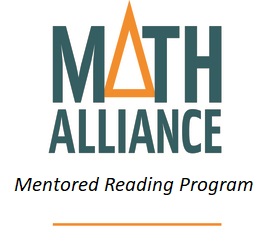-
Introduction to quiver representations (2023)
Reading material on cut and paste techniques, Euler characteristic, classification of surfaces, and Heegaard splittings
-
Surfaces and Three-Dimensional Manifolds (2022)
Reading material on cut and paste techniques, Euler characteristic, classification of surfaces, and Heegaard splittings
-
Numerical range and pseudospectra of operators (2022)
I would like to do a reading with some students about the numerical range and pseudospectra of operators. We will start by looking at matrices, and if time we will then see how what we have learned about matrices may apply to infinite-dimensional operators. By the end of this reading students will learn about the…
-
Representations of finite groups and applications (2022)
We will survey introductory material on group representation theory, and look at how, even at the elementary stages it is useful in attacking other problems in mathematics.
-
Game Theory and Mathematical Economics (2022)
This mentored reading course is intended to provide an introduction to game theory and mathematical economics. This course would be a good fit for both undergraduate and master’s level students in mathematics/statistics who are interested in learning more about how mathematics and statistics are used in economics and related social sciences.
-
Clustering and classification (2022, 2023)
A math alliance scholar will be assigned some reading on the foundations of clustering and classification and its use in molecular biology, marketing and other application areas
-
Algebras for Experimental Design (2022)
Experimental design is a fundamental component of any investigation on the causal effects of treatment factors on a response. Algebraic concepts and topics, such as finite fields/Galois field theory, are useful for the construction and characterization of a class of experimental designs, known as fractional factorial designs, that are widely applied in physical experiments. This…
-
Topology Now! (2022)
A friendly introduction to low-dimensional topology: knots, surfaces, three-dimensional manifolds, the fundamental group, and point-set topology. Cultivate the intuitive ideas of continuity, convergence, and connectedness and get familiar with knot theory, the topology of surfaces and three-dimensional manifolds, and elementary homotopy theory.
-
The Unified Transform Method for solving partial differential equations (2022)
Fokas at Cambridge discovered the unified transform method (UTM) for solving initial-boundary value problems. The method is more general than the traditional classical methods of Fourier and Laplace, and not more complicated to use. We will discuss the method, applying it to a variety of problems, including some that cannot be solved using the classical…
-
Diffeomorphism groups (2022)
Large groups like diffeomorphism groups have rich algebraic, dynamical and topological properties. Studying these groups from any of these perspectives for an example could be a project.
-
Topics in Number Theory (2022)
I’ll assign readings that include examples as well as concepts and ask the students to supply proofs, for instance to find proofs by induction of the formula for the sum of the first n squares, or for Fibonacci numbers in terms of the n-th power of a matrix. I’ll have them study concrete number theory…
-
Asymptotic mathematical statistics (2022)
A basic mathematical introduction to asymptotic statistics.
-
Convex optimization algorithms (2022)
This can be reading or research project on smooth or nonsmooth convex optimization algorithms in various applications. Both analysis and implementation will be covered.
-
Dynamics Done with Your Bare Hands (2022)
Exploring the basics of some important examples of dynamical systems, following the book “Dynamics Done with your Bare Hands”
